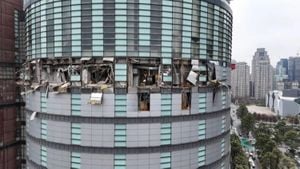On February 12, 2025, several JR East lines faced significant delays and suspensions, disrupting the daily commutes of many. Reports indicate these interruptions were primarily caused by aerial obstructions on the Yokosuka Line, as the company works to address the fallout from recent earthquake incidents.
By 8 PM, maintenance crews had confirmed delays on the Sobu Rapid Line, with specific services on the downward route experiencing significant setbacks. Operations between Tokyo and Tsudanuma were particularly impacted, leading to frustrations among passengers who depend on this key transportation route. The Sobu Main Line also reported notable interruptions, with sections from Sakura to Narita completely suspended.
JR East officials stated, “Due to aerial obstructions on the Yokosuka Line, certain services have been either delayed or suspended.” This quote succinctly encapsulates the operational challenges the rail network is currently facing. The effect of these disruptions has rippled out through commuting hours, affecting both those heading to work and those traveling for leisure. Alongside these, the Narita Line experienced delays on downward segments between Chiba and Narita, including train services to Narita Airport, heightening concerns amid the busy travel season.
The impact on transit is substantial, as JR East aims to keep both commuters and travelers informed during such emergencies. The company has mobilized teams to conduct thorough inspections to evaluate damages and restore full service as quickly as possible. Updates on operational statuses have been relayed through various news outlets, ensuring passengers feel supported during this chaotic period.
With safety always top of mind, JR East has prioritized transparent communication with its patrons. Passengers are encouraged to check real-time updates via JR East’s website or mobile apps, as the situation evolves. These resources have likely helped commuters to reorient their travel plans amid the upheaval.
Looking forward, it remains to be seen how JR East will expedite recovery operations. Past experiences with natural disturbances suggest the importance of rigorous safety inspections and fast-tracked repair works. May commuters eventually return to their regular schedules as this infrastructure is restored. The full flow of train operations may gradually normalize as the necessary assessments conclude, hopefully within the next few days.
The incidents on February 12 mark yet another significant hurdle for daily rail service, but they also highlight the resilience of both JR East and its riders. Keeping the lines running is no small feat during turbulent times. It is expected all stakeholders involved, from railway staff to government agencies, will work collectively to mitigate impacts and return the network to stable conditions.



